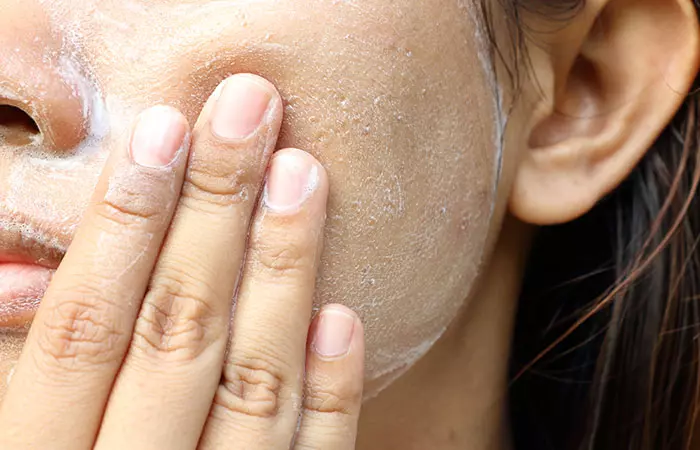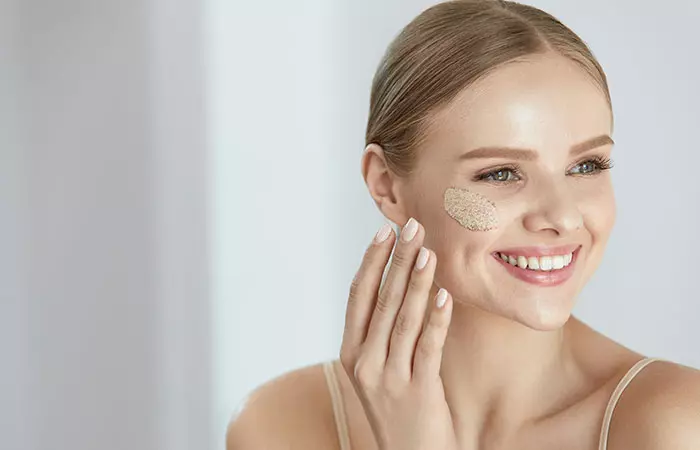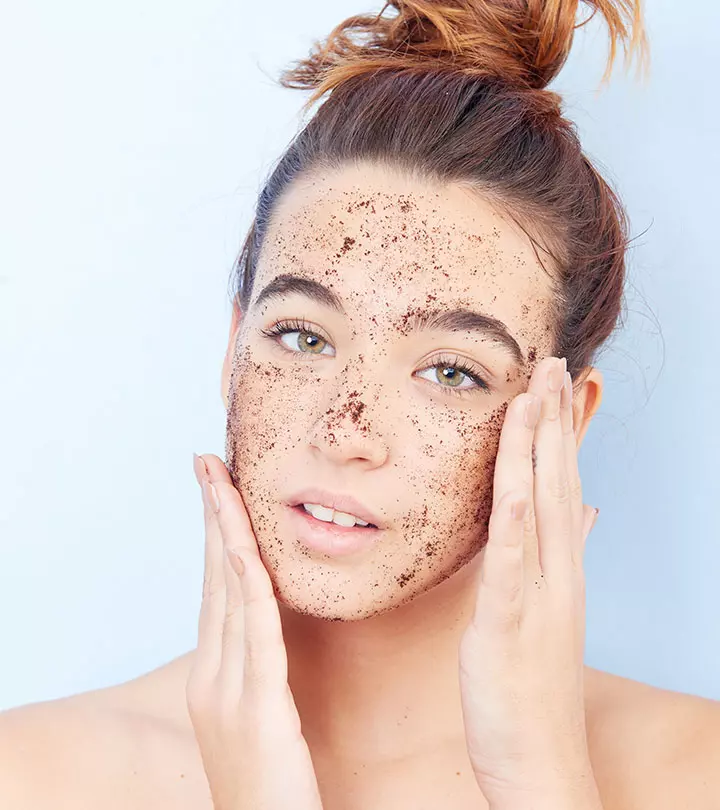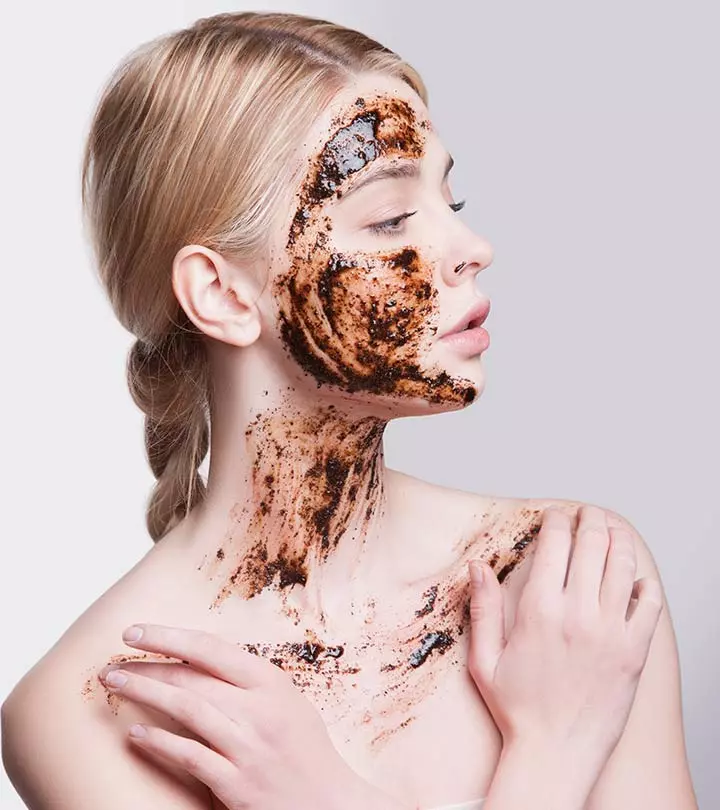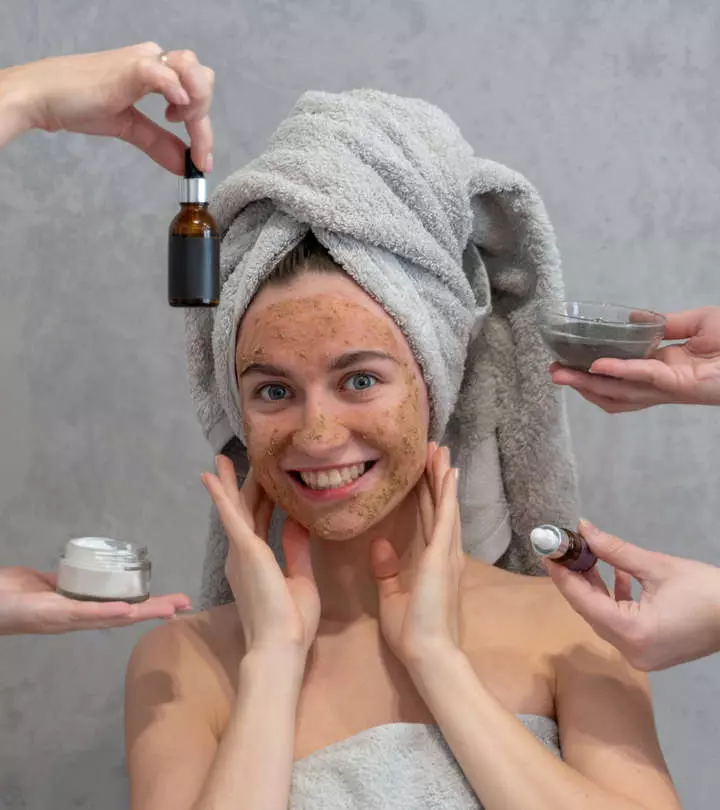How To Exfoliate Your Face And Body

Image: Shutterstock
Welcome to the world of rejuvenation and self-care! In the hustle and bustle of our daily lives, our skin becomes the easy victim of stress and environmental factors. But fear not, because exfoliation is here to rescue your skin and reveal its natural radiance. Whether it’s your delicate face or your hardworking body, exfoliation is the secret weapon that unclogs pores, banishes dullness, and leaves you feeling refreshed from head to toe. So, join us as we delve into the art of exfoliation, exploring the techniques, benefits, and mindful practices that will help you achieve that coveted healthy glow. Read on!
In This Article
How Does Exfoliation Help Your Skin?
Exfoliation works by whisking away the old to make space for the new. It’s a process that involves sloughing off dead skin cells, unveiling the fresher, more vibrant layers underneath. As these dull cells bid farewell, your complexion takes on a renewed glow, the texture becomes smoother, and the canvas is prepped for better absorption of skincare products. Think of exfoliation as a way to reveal the natural radiance of your skin and keep it looking its best.
Different Kinds Of Exfoliants
Exfoliation comes in different forms, each offering its own unique benefits and catering to various skin types and preferences. Here are the main types of exfoliants to consider:
1. Physical Exfoliants
These exfoliants use physical particles or substances to scrub away dead skin cells. They can be in the form of scrubs, brushes, or tools. They’re effective but should be used with care to avoid over-scrubbing and irritation.
2. Chemical Exfoliants
These exfoliants utilize chemical compounds like alpha hydroxy acids or beta hydroxy acids to dissolve dead skin cells and promote cell turnover. They are often gentler than physical exfoliants and can be suitable for various skin types.
3. Enzyme Exfoliants
These use natural enzymes, often derived from fruits like papaya or pineapple, to dissolve dead skin cells. They are generally gentler and can be ideal for sensitive skin types.
4. Microdermabrasion
This method uses a machine to physically exfoliate the skin’s surface with tiny crystals, revealing smoother skin underneath.
5. Peels
These are often performed by skincare professionals and involve stronger chemical exfoliants to target deeper layers of the skin. They can address concerns like fine lines, hyperpigmentation, and acne scarring.
Choosing the right exfoliation method depends on your skin type, concerns, and sensitivity level. It’s important to exfoliate in moderation, avoiding over-exfoliation that can lead to irritation or damage. Always follow up with sunscreen to protect your freshly exfoliated skin from the sun’s harmful rays.
How Often Should You Exfoliate
The frequency depends on your skin type, the type of exfoliant you’re using, and your skin’s tolerance. Here are some general guidelines:
1. Sensitive Skin
If you have sensitive skin, it’s best to exfoliate less frequently, around 1-2 times a week. Opt for gentler exfoliants like enzyme-based or mild chemical exfoliants.
2. Normal To Combination Skin
For normal or combination skin, exfoliating 2-3 times a week can help maintain a healthy glow without over-stressing your skin.
3. Oily Skin
Oily skin can tolerate more frequent exfoliation, around 3 times a week. AHAs and BHAs can be especially beneficial for controlling excess oil and preventing breakouts.
4. Dry Skin
If you have dry skin, it’s important not to over-exfoliate, as this can further strip your skin of moisture. Aim for 1-2 times a week with gentle exfoliants that won’t exacerbate dryness.
5. Mature Skin
As skin ages, cell turnover can slow down. Exfoliating 2-3 times a week with mild chemical exfoliants can help promote a youthful complexion.
How To Exfoliate Your Skin
Exfoliating your face is a rejuvenating self-care ritual that can help reveal your skin’s natural radiance. Here’s a step-by-step guide on how to exfoliate your face effectively:
- Begin with a clean canvas. Gently cleanse your face using a mild cleanser to remove makeup, dirt, and impurities.
- Select an exfoliant suitable for your skin type. For sensitive skin, opt for gentler options like enzyme-based exfoliants. Normal to oily skin can benefit from AHAs or BHAs, while drier skin types might prefer a milder exfoliant.
- If you’re using a new exfoliant, consider doing a patch test on a small area of your skin to ensure you don’t have any adverse reactions.
- Take a small amount of the exfoliant and apply it to your face. Gently massage it using circular motions.
- Avoid applying too much pressure or scrubbing vigorously. Let the exfoliant do the work. Over-exfoliating or being too rough can irritate your skin.
- After a minute or two of gentle massage, rinse it with lukewarm water. Ensure all traces of the exfoliant are removed.
- Gently pat your face dry with a clean, soft towel. Avoid rubbing, as freshly exfoliated skin can be more sensitive.
- Follow up with a hydrating toner to balance your skin’s pH and then apply a nourishing moisturizer. This helps replenish moisture after exfoliation.
- Exfoliating can make your skin more sensitive to the sun. Always apply broad-spectrum sunscreen with at least SPF 30 before stepping outside.
Remember, exfoliation should leave your skin refreshed, not irritated. If you experience redness, irritation, or discomfort, it’s a sign to reduce the frequency or switch to a milder exfoliant. Consistency and gentle care are key to achieving that radiant, healthy complexion. So, what is your ideal skincare routine? Let us know in the comments section!


